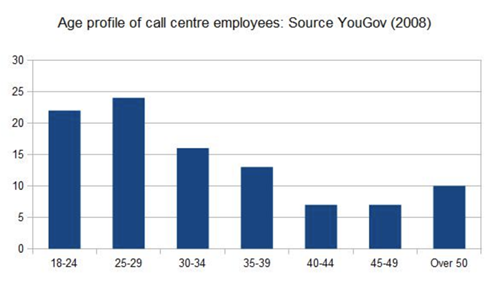Exus Blog Article
The Top 6 Obstacles to Effective Personnel Management

The old adage goes that the most valuable asset in your business is the people - your staff. This is true from the most senior executives to people on the ground floor.
As Richard Branson, CEO of Virgin said: “My philosophy has always been, if you can put staff first, your customer second and shareholders third, effectively, in the end, the shareholders do well, the customers do better, and you yourself are happy.” It makes sense to keep employees happy, too.
Personnel is your collections department’s biggest expense, and they represent the biggest opportunity to improve performance. With effective management, you can ensure better productivity, accuracy, and results from your collections team - often customers’ first contact with your business. A happy and motivated collections team means happy customers. And happy customers are more likely to settle their debts.
However, managing staff to be productive - and inspiring them to be their best - is not simple, particularly with a new generation of employees that demands more from employers. You need to understand these demands and make sure you’re giving your personnel the tools they need to do the best job they can, to ensure you get the best results. Here’s what you need to know.
The war for talent (talent won)
The performance of employees has long been an area of interest for business leaders. In the 1930s, a series of experiments called the Hawthorne studies showed the link between working environments and productivity. Sociologist James Worthy found a correlation between autonomy and morale when he started his own business, and today the world’s biggest corporations like Google and Amazon spend millions on employee wellbeing.
And while these studies are focused predominantly on managerial and leadership talent, or employees in high knowledge areas, the findings have had a trickle-down effect on employees across the board. As Amazon’s VP of HR, John Olsen, told Business Insider UK: "We invest in benefits from day one. My benefits package is the same as a benefits package here at the fulfillment centre (i.e. the people in the warehouse)."
The thing that all these studies show is that money is rarely the biggest driver for employee happiness and productivity. What is needed by businesses is a focus on employee value and making employees valued, particularly with a new breed of employee now dominating the work landscape?
The millennial mindset
Global consultancy Deloitte has released its Millennial survey every year for the last seven years. Its latest report in 2017 polled approximately 8,000 Millennials across 30 countries to find out their key drivers and needs. Whether you agree with the term or not, ‘Millennials’ - the generation aged 21 to 36 in 2017 - now make up 1 in 3 members of the workforce in the US according to a Pew Research Center analysis of US Census Bureau data.
In 2008, YouGov profiled contact centre staff - which form a large proportion of the ecosystem of the collections - and found that nearly half of them were between 18-30. If you want happy staff, you need to focus on what they want from an employer.

So what are the pitfalls of managing this demographic, and how can you make sure you get the most out of them?
In any industry, open communication is the glue that holds teams together. Within a collections department, the effectiveness of communication between team members or with customers impacts collections results.
After all, if collectors don’t have clear directions from managers, they don’t perform as well as they could. Internal communications affect collector morale, motivation, and productivity. Without clear communication channels, messages can get lost and delay projects. Collectors understandably get frustrated, and bosses don’t see the results the bottom-line demands.
When team morale or individual collector motivation is down, the quality of communication with customers suffers, too. Unproductive, unmotivated, or unhappy collectors don’t exactly present your company’s best face. And they certainly don’t put the customer’s best interests first. Both are clear to debtors and could spell the difference between a positive settlement and delinquency.
And it’s not just communication that’s important either, it’s how you communicate. Millennials and those with a Millennial mindset spend less and less time on email, and more time on social media and instant messaging services like WhatsApp and Facebook Messenger. Could either of these provide a more effective way to send out company communications than the traditional channels?
An October 2017 study from MIT Sloan highlighted communication trends among Millennial MBAs. They found that their students preferred visual communication above written, and cited data visualization as crucial to their job roles. While both play a key role, it’s essential to consider reporting mediums when feeding back performance.
When looking at targets, for instance, dashboards and visual cues are far more effective ways to communicate than written reports. Similarly, individual and company performance reviews might better be illustrated with ongoing performance tracking using app technology.
Centralized systems are one way to help. They keep communications and files in one place and are organized under a central authority, so communications are consistent and clear throughout the organization.
Incentive programs use financial and non-financial means to motivate collectors to perform better. Without them, entire departments will struggle.
In today’s collections environment, simply providing feedback and praise isn’t enough. Collectors who do well expect to—and should be—rewarded. And it’s not just about money, though that is one key element of a successful incentives program. Poorly designed incentives don’t communicate to staff that they’re valued, making it difficult or impossible to demand greater performance or additional work.
A poorly designed incentive program may have a number of consequences. If it doesn’t reward top talent enough, that talent may seek employment elsewhere. If it rewards collectors too generously, a culture of entitlement may damage the organization in the long run.
While every organization has different needs, the right incentives programs are simple, appealing, and engineered with dynamic goals that prevent collectors from slipping into complacency. Financially, bonuses of 10 to 15 percent of monthly salary are usually appropriate for exceptional performance (though don’t go above 20 percent). You might also supplement financial incentives with appropriately valued non-financial rewards like concert tickets, gift certificates, etc.
Get it right, and you’ll not only improve areas like communication, compliance, and technology usage, but you’ll keep your team happy and motivated too.
Capacity planning is a critical way for collections departments to forecast how many personnel hours are needed to service accounts. But when managers don’t plan correctly, they can alienate collectors and impact productivity.
When managers underestimate how many collectors you need, it’s easy to end up assigning staff too many accounts. Collectors will become overworked, frustrated and the bottom line will suffer because there is too much responsibility put on one person.
The opposite is also true. If you overestimate how many people you need, the bottom line suffers and collectors don’t have enough to do.
Increasing capacity need not necessarily mean adding more employees - it may be a case of implementing new tools to enable your existing staff to do their job more efficiently and effectively. There are two ways in which such tools can improve your collections department’s productivity:
- Customer-facing tools: The addition of a self-service portal where customers can manage their own debt is a speedy way for collections teams to scale their capacity, while also offering a solution for today’s consumers who prefer to engage digitally rather than with lengthy phone calls.
- Specialized internal tools: Specialized collections software is easy to use and scalable, as well as keeping processes and conversations well-documented and reducing case-by-case admin.
Research from the University of Birmingham Business School shows that employees who are given greater levels of both schedule control and job control report higher levels of wellbeing. With increased wellbeing comes improved productivity, better teamwork, higher employee satisfaction, and even positive effects on the bottom line.
Autonomy and trust go hand in hand: by giving your collections staff the freedom to work under their own direction, at their own pace, and potentially even from their choice of location, you’ll demonstrate your trust in their work ethic, keeping them happy and motivated.
Specialized collections software can empower your collections team: removing the need for micromanagement, decreasing the bottlenecks between different teams, and allowing the end-user to have complete control over their own workflow.
Customer service, negotiation, lines of questioning, management of emotions...there are plenty of aspects of the role of the collections that benefit from on-the-job training. Not only do your collections staff need to be trained to perform their role to the best of their abilities - but they also need to ensure that they’re fully compliant with industry regulations too.
The benefits of solid training programs in the workplace are indisputable. Appropriate, tailored training can increase employee retention, improve engagement, develop skills, raise self-esteem, boost morale, and more.
Conversely, poorly trained collections staff can create a huge drop in a team’s profitability.
Training staff to use centralized scripts and communication checklists will create consistent in-house standards that can dramatically improve your collections process - while specialized collections software can offer a department-wide solution that both helps team members to perform their role, as well as providing a paper trail for compliance purposes.
There will always be obstacles to managing a collections department, but with this information handy, you’ll be able to ensure your personnel is happy and motivated to bring in the best results.
For even more information on how you can manage your collections personnel and set your department up for success, download our guide on six actionable steps retail banks can take to improve operations.
